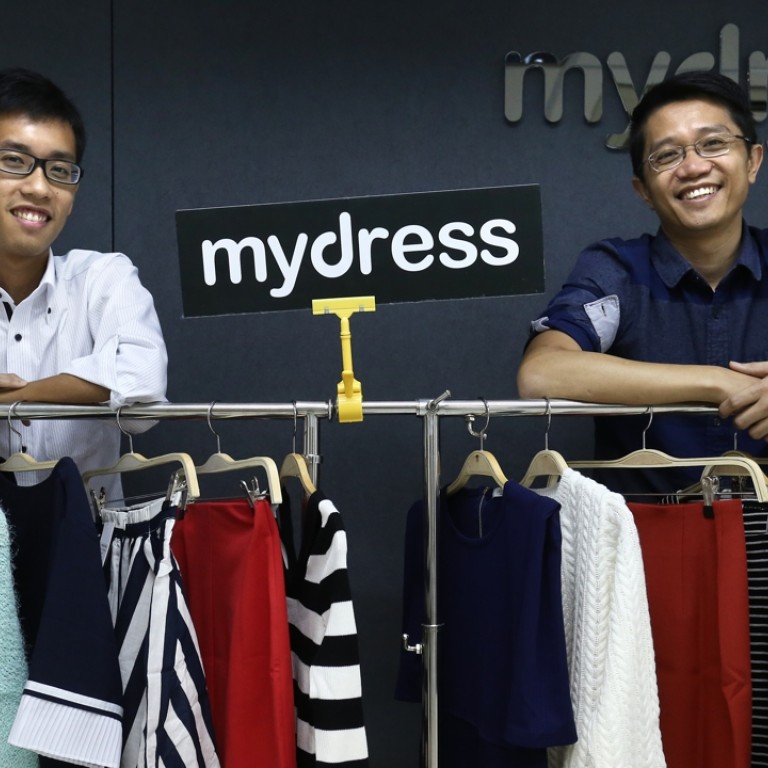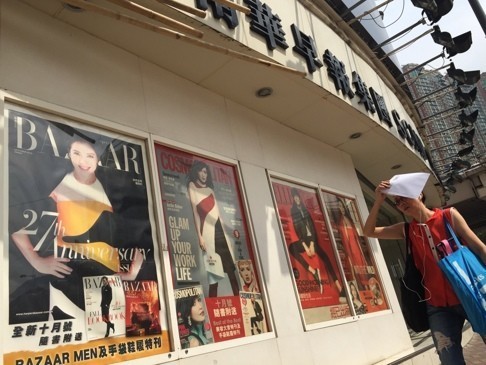
Hong Kong fashion e-retailer MyDress plans to leverage new owner SCMP Group’s strengths to replicate success in SE Asia
City’s popular e-commerce site says synergy with publisher’s major titles like Elle, Cosco a boon, no plans to enter mainland China due to market saturation
Hong Kong online retail platform MyDress.com will be able promote itself more aggressively, expand to Southeast Asian markets early next year and develop its product lines to include Western brands in the wake of its recent acquisition by SCMP Group, the company said.
MyDress co-founder Edmund Wong said he is also making efforts to bolster its share of the Hong Kong market, improve user experience, including customer service, and enhance how the site works on mobile devices.
READ MORE: China-focused media group SCMP pivots into e-commerce with acquisition of Hong Kong fashion retailer MyDress.com
“The major portion [of new funding will be spent] on marketing. In one way, we have to continue to gain our market share to become the number one in the local market,” Wong said, listing as other priorities enlarging the overall market and generating customer loyalty.
The company can also leverage the group’s strengths, he said, giving the example of how it could combine the content and communities developed by titles like Elle, Esquire and Cosmopolitan - all under the SCMP Group umbrella - with the e-retailer’s offerings.
“Through MyDress, we will gain a firm foothold in the e-commerce space in Hong Kong and extend along the internet value chain of ‘content-community-commerce’, thus enabling new monetization possibilities,” said Robin Hu, CEO of SCMP Group.
Wong founded MyDress in 2009 as a fashion-sharing platform based on a similar model to the one employed by Pinterest. But the concept proved hard to monetise as its membership was too limited to draw in advertisers. The company had up to 30,000 members at the time.
Wong brought in Leon Lai in 2012 to develop an e-commerce site for the company. Lai gained a reputation for launching Taobao Marketplace and Tmall in Hong Kong, the online retail platforms of Chinese e-commerce giant Alibaba.
His connections across logistics, payment and merchants built during eight years at Alibaba provided a strong foundation when My Dress was re-launched as an e-commerce platform in April 2013.
Wong said his core shoppers are now women aged 18-35, but that more men are expected soon courtesy of a recently added men’s clothing range.
An average shopper on the site spends HK$500 to HK$550 per transaction, or up to HK$700 during the winter season, and around 90 per cent come from Hong Kong, Wong said.
MyDress has no plans to enter mainland China at present, partly due to the level of competition vis-a-vis the size of the company, he added.

“If the market is saturated like Taiwan or China, there’s no room for you to go in,” Wong said.
“If the market is very fragmented [like in Southeast Asia], at least we can still find a way to get a presence.”
Nearly 70 per cent of the site’s hits now come from mobile users. Last year, MyDress was ranked the most-searched-for fashion e-commerce site in Hong Kong for mobile.
“How can we optimise your buying behaviour on such a small device? We have to somehow find a way to show you the items on such a small screen and it’s not easy,” Wong said in explaining plans to invest in mobile-based IT infrastructure.
Internet retailing as a percentage of total retail sales is comparatively low in Hong Kong at 2.4 per cent as of last year. This compares to a world average of 5.8 per cent, or 6.3 per cent in Asia, according to Euromonitor International.
Logistics costs are twice the price per delivery in Hong Kong compared to neighbouring Taiwan, Lai said, adding that the company also faces other challenges.
These include reluctance from traditional retailers to sell online, and consumers’ security fears, he added.
The company said it found customers responded warmly to its cash on delivery service, which is more cost effective than bank transfers..
“We actually take this risk and embrace it, and make it more convenient for the user,” Wong said.
“And when they trust us after the first or second time, they will start to swipe their credit card the next time.”

